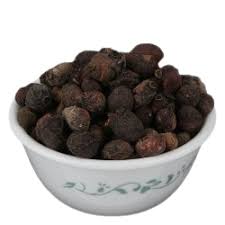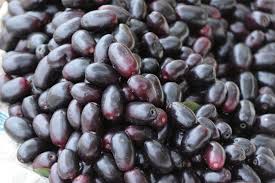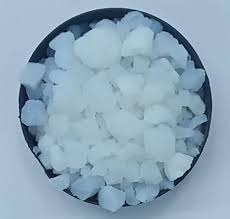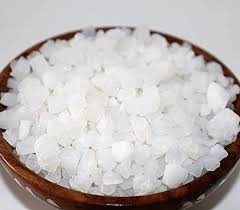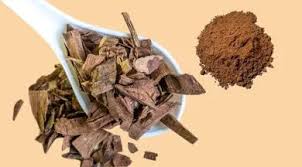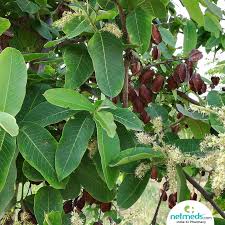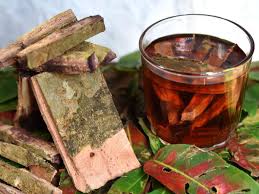
Kaali Haldi in Ayurveda: Traditional Healing Secrets
Ayurveda, India’s ancient science of life and wellness, is built on the foundation of natural healing using herbs, roots, minerals, and lifestyle alignment. Among the many herbs revered in Ayurvedic practices, Kaali Haldi — also known as Black Turmeric (Curcuma caesia) — holds a special place. With its unique dark blue-black interior and strong aromatic profile, Kaali Haldi is not just a rare spice but a powerful traditional remedy used for centuries in tribal and classical healing systems.
Though less popular than its cousin, yellow turmeric, Kaali Haldi is loaded with medicinal properties that aid in detoxification, skin and hair healing, pain relief, inflammation control, and spiritual cleansing. This root is often used in Ayurveda, Siddha, and tribal medicine, and has also been incorporated in ritualistic and Tantric practices in various parts of India.
In this comprehensive article by dirghaanshi, we uncover the traditional Ayurvedic secrets of Kaali Haldi, including its therapeutic uses, benefits, and preparation methods — so you can explore its true healing potential in a natural and holistic way.
Long Description: The Ayurvedic Power of Kaali Haldi
- What is Kaali Haldi?
Kaali Haldi (Curcuma caesia) is a perennial herb belonging to the ginger family (Zingiberaceae). It is known for:
Its dark bluish-black colored rhizome
A camphor-like aroma
Strong taste and medicinal bitterness
Rare availability in tribal and forest areas
The rhizome is harvested, cleaned, and dried to be used in powdered or fresh form in Ayurvedic preparations. It is believed to carry the energy of Shakti (divine feminine) and is traditionally used to balance Kapha and Vata doshas.
- Traditional Ayurvedic Properties of Kaali Haldi
In classical Ayurvedic texts and folk traditions, Kaali Haldi is described with the following properties:
Rasa (Taste): Tikta (bitter), Katu (pungent)
Guna (Quality): Laghu (light), Ruksha (dry)
Virya (Potency): Ushna (hot)
Vipaka (Post-digestive effect): Katu (pungent)
Effect on Doshas: Balances Kapha and Vata, slightly increases Pitta in excess
Its Ushna virya makes it a powerful agent to stimulate circulation, digestion, and remove toxins. It is used both internally (under guidance) and externally (in oils, pastes, poultices, masks).
- Ayurvedic Uses of Kaali Haldi
Let’s explore how Kaali Haldi is used traditionally for healing in Ayurveda and local medicine:
3.1 For Skin Diseases and Infections
Kaali Haldi is used in pastes and oils to treat:
Eczema
Ringworm
Psoriasis
Skin irritation
Acne and wounds
Its antibacterial, antifungal, and anti-inflammatory properties help purify the skin and promote faster healing.
How to use:
Mix Kaali Haldi powder with neem or tulsi paste
Apply to affected areas
Leave for 20–30 minutes, rinse with lukewarm water
3.2 For Joint Pain and Inflammation
Due to its ushna virya (warming nature), Kaali Haldi is ideal for reducing:
Arthritis pain
Rheumatism
Joint stiffness
Swelling and inflammation
It is often used in medicated oils for Abhyanga (therapeutic massage).
How to use:
Infuse Kaali Haldi in sesame or castor oil
Warm and massage into joints
Use daily or weekly as needed
3.3 For Scalp Detox and Hair Strengthening
Kaali Haldi is increasingly popular in Ayurvedic hair care for:
Treating dandruff
Eliminating scalp infections
Stimulating blood circulation
Strengthening hair follicles
How to use:
Add Kaali Haldi to coconut oil or hair masks
Apply on scalp
Leave for 30–60 minutes before washing
(Explore our post: “Kaali Haldi Benefits for Scalp Detox and Infection Control”)
3.4 For Respiratory Disorders
Kaali Haldi is used in folk medicine to relieve:
Asthma
Bronchitis
Congestion
Cough
Its hot potency clears Kapha, opens up respiratory passages, and reduces mucus buildup.
Note: Always consult an Ayurvedic doctor before internal use.
3.5 For Digestive and Liver Health
Its bitter taste and warming quality aid in:
Improving digestion
Stimulating bile flow
Removing toxins (ama) from the liver
Controlling gas and bloating
Used in decoctions or churnas (powders) under Ayurvedic supervision.
3.6 For Wound Healing and First Aid
Tribal communities apply Kaali Haldi paste directly to wounds, cuts, or insect bites due to its:
Germ-killing power
Anti-swelling effects
Cell regeneration ability
It also helps stop minor bleeding and speeds up recovery.
3.7 In Spiritual and Tantric Practices
Kaali Haldi is used in rituals across many Indian cultures for:
Removing negative energies
Protection and purification
Offering during Shakti pujas
Used during Diwali and Kali worship
Ayurveda respects both the physical and energetic dimensions of herbs — and Kaali Haldi stands as a powerful agent in both.
- How to Prepare and Use Kaali Haldi
External Uses:
Oil infusion: With coconut or sesame oil
Face/hair mask: With aloe vera, neem, or curd
Poultice: For wounds and pain relief
Scalp treatment: With neem or amla oil
Internal Uses:
Under supervision only, in the form of:
Churna (powder)
Kashayam (decoction)
Capsules
- Safety and Precautions
Although natural, Kaali Haldi is potent. Consider the following precautions:
Always do a patch test for external applications
Avoid use near eyes and open wounds
May stain skin and clothes
Do not ingest without Ayurvedic guidance, especially during pregnancy or existing liver conditions
Always store in dry, cool environments
- Where to Find Authentic Kaali Haldi
Since Kaali Haldi is rare and seasonal, it’s important to buy from trusted Ayurvedic suppliers or certified organic brands. Check for:
100% pure Kaali Haldi
No added color or preservatives
Proper Ayurvedic labeling
Preferably in glass jars or paper pouches
At dirghaanshi, we recommend using raw and powdered Kaali Haldi in your hair and skin care regimes only after confirming purity and authenticity.
- Modern Research Supporting Its Benefits
Recent studies on Curcuma caesia have confirmed:
Antimicrobial activity (effective against E. coli, Candida, and Staphylococcus)
Antioxidant potential (protects skin and cells from oxidative damage)
Anti-inflammatory effects (relieves swelling and joint pain)
Anticancer properties (under experimental studies)
This validates what Ayurveda has known for centuries — that Kaali Haldi is more than a folk remedy; it is a scientifically relevant healing herb.
Conclusion
Kaali Haldi is one of Ayurveda’s hidden treasures — a herb that bridges physical, mental, and spiritual healing. Whether it’s skin disorders, joint pain, infections, scalp issues, or even spiritual detox, Kaali Haldi delivers a multi-dimensional therapeutic effect rooted in ancient wisdom.
At dirghaanshi, we are committed to rediscovering and sharing the traditional healing secrets of Indian herbs. With Kaali Haldi, you don’t just get a remedy — you connect to a deeper tradition of healing, rooted in natural balance and inner alignment.
Use it with respect, knowledge, and intention, and you’ll uncover its profound power for health, beauty, and well-being.


